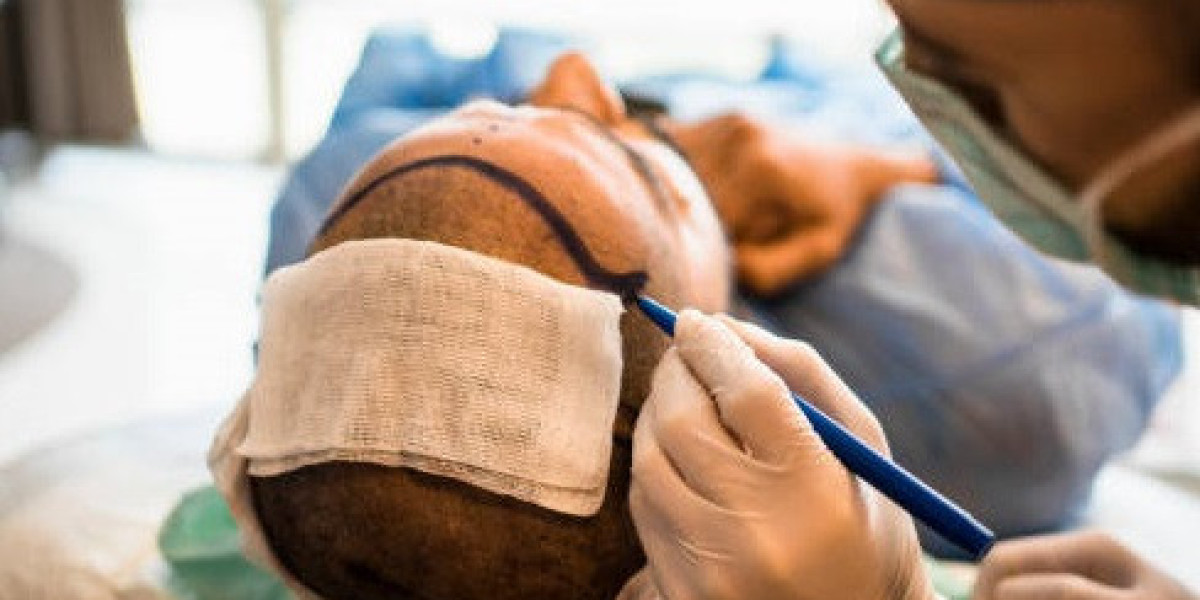When considering a Hair Transplant in Islamabad, one of the most common questions patients have is about the recovery process—how long it takes, what to expect, and when normal activities can be resumed. The answer can vary based on factors such as the surgical method used, individual healing capacity, and aftercare practices. Understanding the recovery timeline is essential for setting realistic expectations and ensuring optimal results.
Understanding the Hair Transplant Procedure
Hair transplant surgery involves transferring healthy hair follicles from a donor area (usually the back or sides of the scalp) to thinning or bald areas. Two main techniques are used:
FUE (Follicular Unit Extraction): Hair follicles are individually extracted and implanted. This method has minimal scarring and generally faster healing.
FUT (Follicular Unit Transplantation): A strip of scalp is removed from the donor area, and follicles are harvested and transplanted. This may require slightly longer healing due to the linear incision.
Both methods are safe and effective when performed by skilled surgeons, but the recovery experience can differ slightly between them.
Immediate Post-Surgery Phase (Days 1–3)
During the first few days after the procedure, patients may experience:
Mild swelling around the forehead or eyes
Slight discomfort or tightness in the scalp
Tiny scabs forming around the transplanted follicles
Surgeons typically recommend resting for at least a couple of days and avoiding strenuous activities. Sleeping with your head elevated can help reduce swelling. This phase is crucial for protecting the newly transplanted grafts.
Early Recovery (Days 4–7)
By the end of the first week:
Most swelling and discomfort should subside.
Scabs will start to fall off naturally.
Itching may occur as part of the healing process.
It’s important not to scratch or pick at the scalp, as this can damage grafts. Patients are usually able to wash their hair gently with a mild shampoo, following the surgeon’s instructions.
Mid-Recovery (Weeks 2–3)
In this phase:
Redness and mild sensitivity in the donor and recipient areas continue to improve.
Some transplanted hairs may begin to shed—a completely normal process called “shock loss.”
The scalp feels less tender, and patients can often return to normal physical activities.
While shedding may be alarming, it’s actually a sign that the follicles are entering a resting phase before producing new, permanent hair.
The Shedding Phase (Weeks 3–6)
Most transplanted hairs fall out during this time. This is part of the natural growth cycle and not an indication of failed surgery. Beneath the surface, the follicles remain healthy and will begin producing new hair in the coming months.
New Hair Growth (Months 3–6)
By the third month:
Fine, thin hairs begin to emerge.
Hair gradually thickens with time.
Any lingering redness or minor bumps typically resolve.
At this stage, patience is key. Full hair density is not yet visible, but the foundation for the final result is being established.
Final Results (Months 9–12)
By the ninth month:
Hair becomes noticeably denser and more natural-looking.
Styling options expand as hair reaches a comfortable length.
Most patients achieve their desired outcome within 12 months, although subtle improvements may continue up to 18 months.
Factors That Affect Recovery Time
Several variables influence how quickly a person heals after a hair transplant:
Technique Used: FUE generally has a faster recovery than FUT due to smaller incisions.
Individual Healing Rate: Genetics, age, and overall health affect tissue repair.
Aftercare Compliance: Following post-operative instructions significantly improves recovery speed.
Surgeon’s Expertise: Skilled surgeons minimize trauma to the scalp, promoting faster healing.
Tips for a Smooth Recovery
To support a faster and safer healing process:
Avoid heavy exercise for at least 10–14 days.
Refrain from direct sun exposure on the scalp for a few weeks.
Follow all prescribed medication schedules.
Use only recommended shampoos and hair products.
Keep all follow-up appointments with your surgeon.
When Can You Return to Work?
Many patients return to desk jobs within 2–5 days, depending on their comfort level and the nature of their work. Those in physically demanding jobs may need at least 10–14 days before resuming full duties.
The Emotional Side of Recovery
Hair transplant recovery is not only a physical process but also an emotional one. Seeing hair shed after surgery can be discouraging, but understanding that it’s part of the normal cycle helps maintain confidence in the results. Most patients feel more satisfied as new hair growth becomes visible.
Conclusion
Recovery time after a hair transplant varies, but most patients can expect initial healing within 1–2 weeks, shedding in the first couple of months, and noticeable new growth by the third month. Full, natural-looking results typically appear within a year. Choosing an experienced clinic and following aftercare instructions play a huge role in ensuring a smooth recovery and optimal results.



